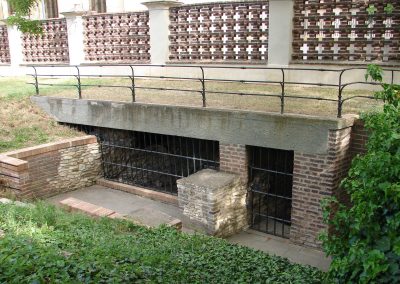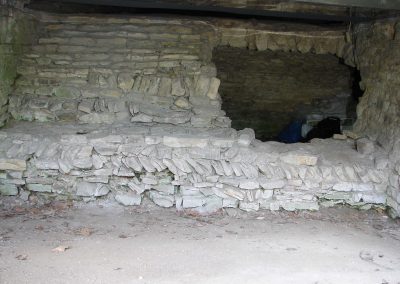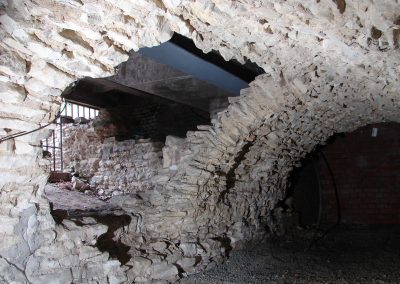History of the Roman Bridge
During the reign of Vratislav I, Vyšehrad, now a National Cultural Monument, became the centre of political power and also served as the residence of the monarch. The Romanesque Bridge, dating from the late 11th century, is an important historical object and is situated on the territory of the former royal acropolis. It was built as a link between the princely and royal precincts and the Romanesque Basilica of St. Peter and Paul, and at the same time was probably part of the fortifications of the Premyslid Palace.
Involvement of the Klokner Institute
The Klokner Institute of the CTU concluded a memorandum of cooperation with the Vyšehrad National Cultural Monument at the end of 2021, on the basis of which diagnostics of the reinforced concrete ceiling structure above the Romanesque bridge, diagnostics of the Romanesque stone masonry bridge and measurements of the dynamic effects of traffic were carried out in 2022. The above-mentioned reinforced concrete structure, dating from the 1930s, is the de facto bridge that carries traffic along Štulcova Street.
By measuring the dynamic effects of traffic, it has been shown that, when all traffic regulations are complied with, in particular the speed and weight of vehicles, car traffic does not have a destructive effect on the structure of the Romanesque bridge. A wide range of knowledge about the condition of the structures and the degradation and corrosion influences was obtained in the framework of the diagnostic work, which then formed the basis, in particular, for the determination of the load capacity of the reinforced concrete floor structure and for the structural analysis of the arch of the Romanesque Bridge. This showed that in the long term the vault was structurally unstable and therefore its condition was assessed as unsatisfactory to disastrous. The determined normal load capacity of the reinforced concrete floor structure is 16 t.
Conclusions from the diagnosis
On the basis of the results of the diagnostic work and the structural analyses, recommendations and measures were formulated to ensure the maximum extension of the service life of the bridge in a sensitive manner. The most important of these is to make up the broken hole in the arch, to replenish the masonry in the arch breach and to refill it with a suitable inert material. These measures will ensure its static stability. In order to minimise the moisture load, it was recommended to implement relieving underground drainage and protection of the perimeter masonry surrounding the Romanesque bridge area against ground moisture. Due to the poor condition of the reinforced concrete floor structure, it was recommended that a new structure be constructed over the Romanesque Bridge area. Further measures were proposed to stabilise the internal microclimate of the area in which the Romanesque bridge is located, based on long-term monitoring.




